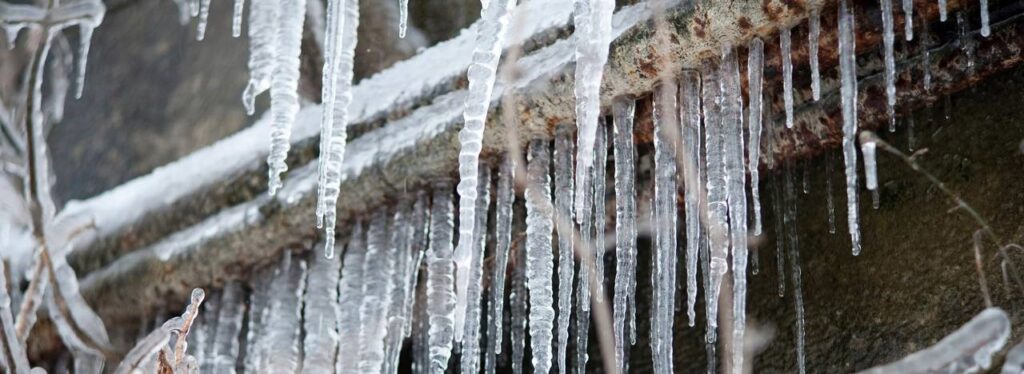Ways to Maintain Your Pipes from Cold Weather Issues: Essential Tips
Ways to Maintain Your Pipes from Cold Weather Issues: Essential Tips
Blog Article
We have unearthed this great article relating to Helpful Tips to Prevent Frozen Pipes this Winter down the page on the internet and felt it made perfect sense to quickly share it with you here.

Cold weather can damage your pipes, specifically by freezing pipelines. Below's just how to stop it from taking place and what to do if it does.
Intro
As temperatures decrease, the danger of icy pipes increases, potentially causing pricey fixings and water damages. Understanding just how to avoid frozen pipes is essential for house owners in chilly environments.
Avoidance Tips
Shielding prone pipes
Cover pipes in insulation sleeves or make use of warm tape to protect them from freezing temperature levels. Concentrate on pipes in unheated or outside locations of the home.
Heating methods
Maintain interior rooms appropriately heated, particularly locations with plumbing. Open closet doors to allow warm air to flow around pipelines under sinks.
Exactly how to recognize frozen pipelines
Try to find reduced water circulation from faucets, unusual odors or sounds from pipes, and visible frost on subjected pipes.
Long-Term Solutions
Structural modifications
Take into consideration rerouting pipelines away from outside wall surfaces or unheated locations. Add additional insulation to attics, basements, and crawl spaces.
Updating insulation
Invest in high-quality insulation for pipes, attics, and walls. Appropriate insulation aids keep regular temperatures and minimizes the danger of frozen pipes.
Protecting Exterior Pipes
Garden hoses and exterior taps
Disconnect and drain yard tubes before winter season. Mount frost-proof spigots or cover outdoor taps with insulated caps.
Recognizing Frozen Pipelines
What triggers pipelines to ice up?
Pipes freeze when subjected to temperature levels listed below 32 ° F (0 ° C) for expanded periods. As water inside the pipelines freezes, it broadens, putting pressure on the pipeline wall surfaces and potentially creating them to break.
Dangers and problems
Icy pipelines can bring about water supply disruptions, building damage, and pricey repairs. Ruptured pipes can flood homes and cause substantial architectural damages.
Indications of Frozen Pipeline
Recognizing icy pipes early can avoid them from breaking.
What to Do If Your Pipes Freeze
Immediate activities to take
If you presume icy pipes, maintain taps open to ease pressure as the ice melts. Make use of a hairdryer or towels taken in warm water to thaw pipes gradually.
Verdict
Protecting against icy pipes requires aggressive procedures and quick reactions. By recognizing the reasons, signs, and preventive measures, property owners can shield their plumbing throughout winter.
5 Ways to Prevent Frozen Pipes
Drain Outdoor Faucets and Disconnect Hoses
First, close the shut-off valve that controls the flow of water in the pipe to your outdoor faucet. Then, head outside to disconnect and drain your hose and open the outdoor faucet to allow the water to completely drain out of the line. Turn off the faucet when done. Finally, head back to the shut-off valve and drain the remaining water inside the pipe into a bucket or container. Additionally, if you have a home irrigation system, you should consider hiring an expert to clear the system of water each year.
Insulate Pipes
One of the best and most cost-effective methods for preventing frozen water pipes is to wrap your pipes with insulation. This is especially important for areas in your home that aren’t exposed to heat, such as an attic. We suggest using foam sleeves, which can typically be found at your local hardware store.
Keep Heat Running at 65
Your pipes are located inside your walls, and the temperature there is much colder than the rest of the house. To prevent your pipes from freezing, The Insurance Information Institute suggests that you keep your home heated to at least 65 degrees, even when traveling. You may want to invest in smart devices that can keep an eye on the temperature in your home while you’re away.
Leave Water Dripping
Moving water — even a small trickle — can prevent ice from forming inside your pipes. When freezing temps are imminent, start a drip of water from all faucets that serve exposed pipes. Leaving a few faucets running will also help relieve pressure inside the pipes and help prevent a rupture if the water inside freezes.
Open Cupboard Doors
Warm your kitchen and bathroom pipes by opening cupboards and vanities. You should also leave your interior doors ajar to help warm air circulate evenly throughout your home.

Do you appreciate reading about How To Avoid Freezing Pipes? Leave feedback further down. We'd be happy to find out your responses about this post. We hope that you come back again in the future. Sharing is caring. Helping others is fun. We love reading our article about Winter Plumbing Precautions: Preventing Frozen Pipes.
More Details Report this page